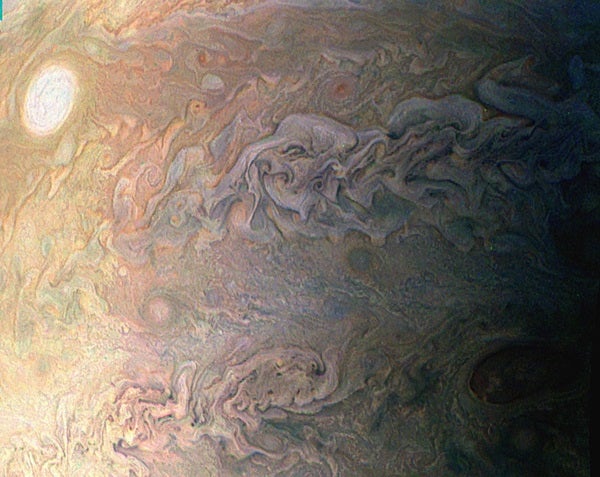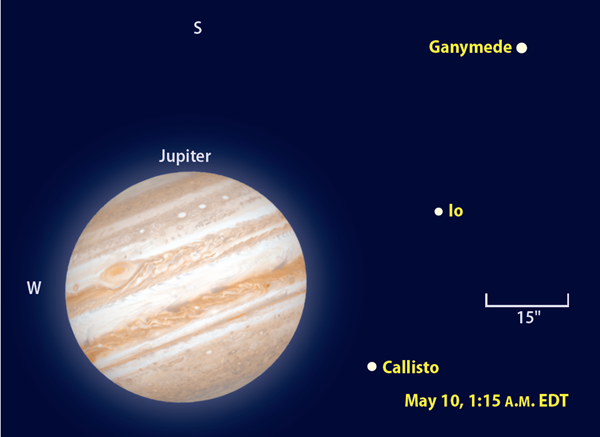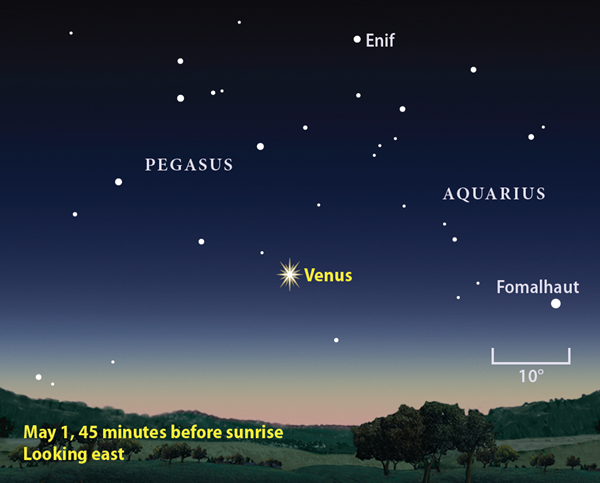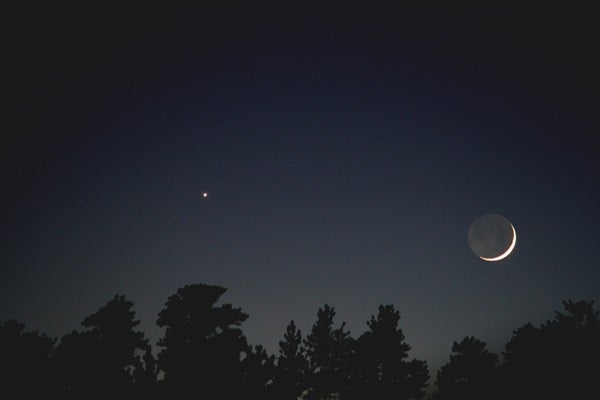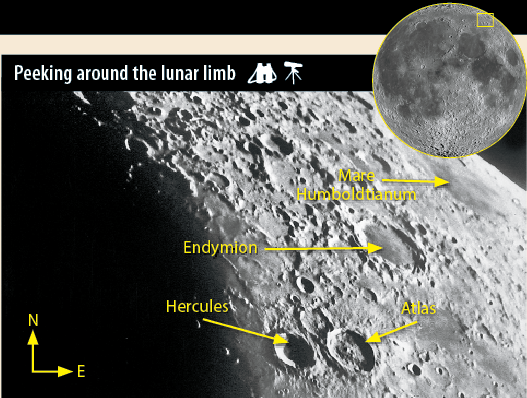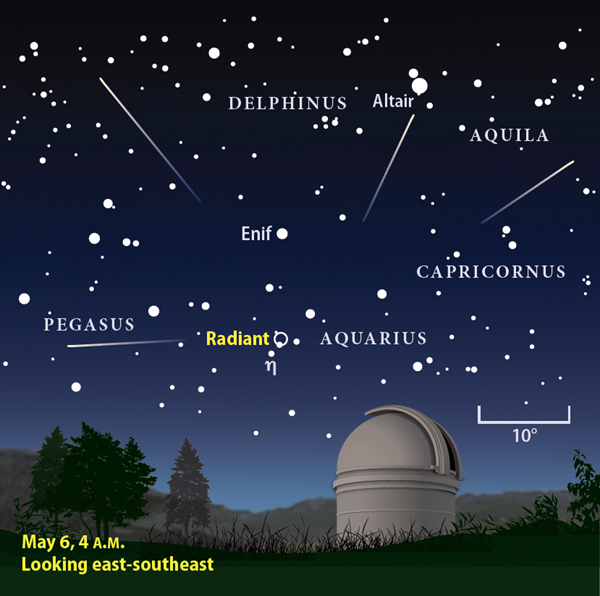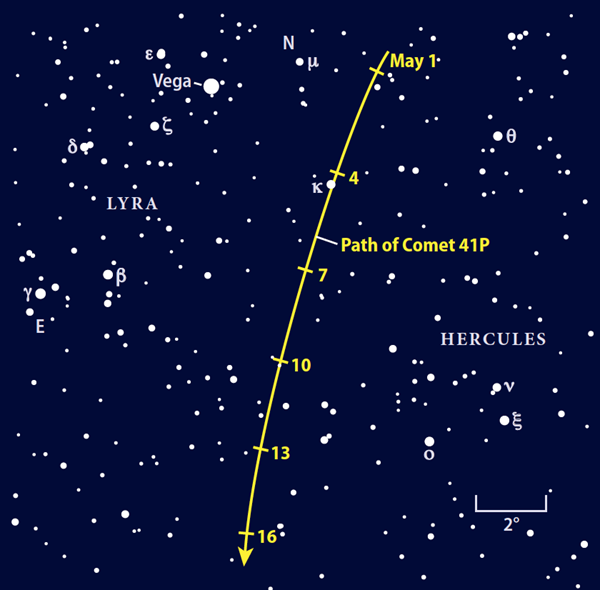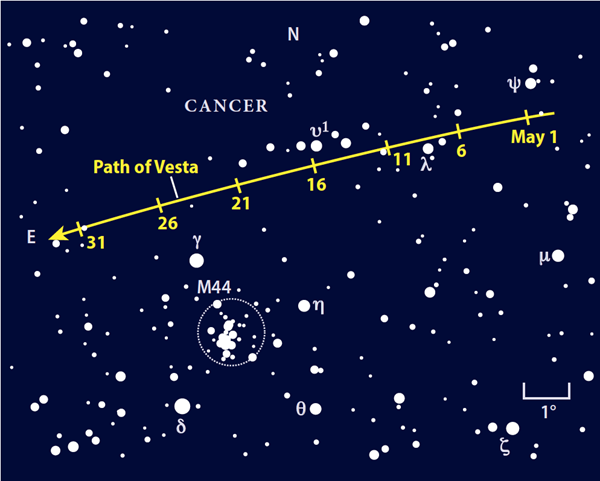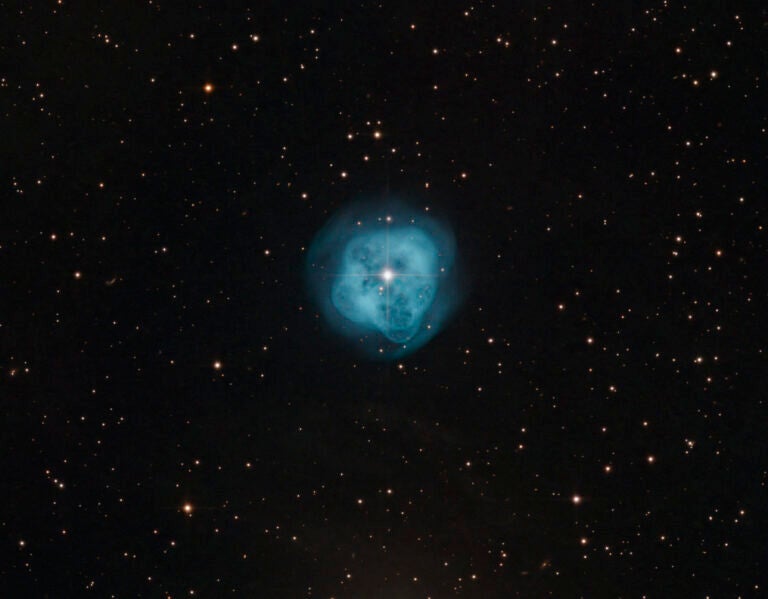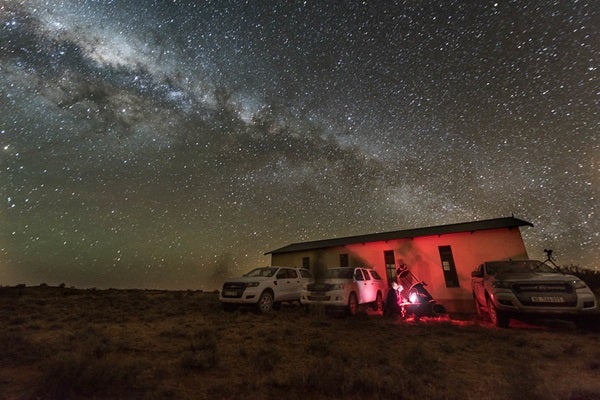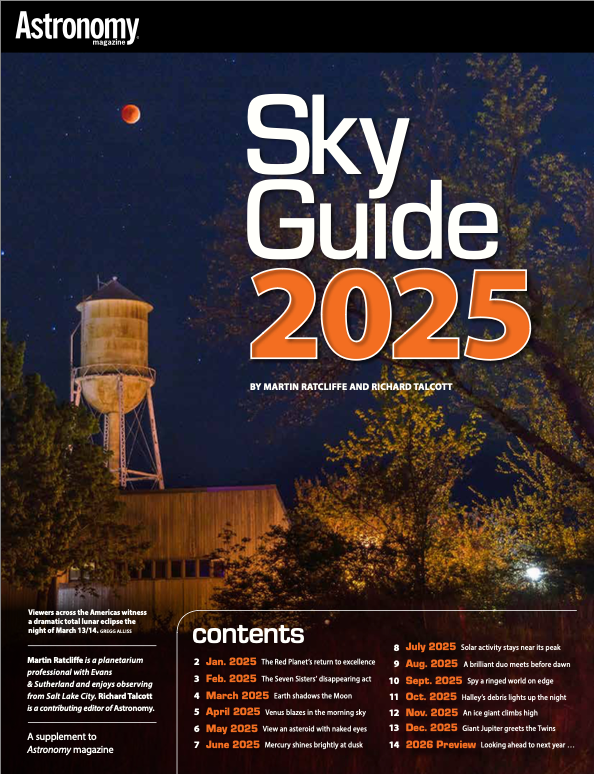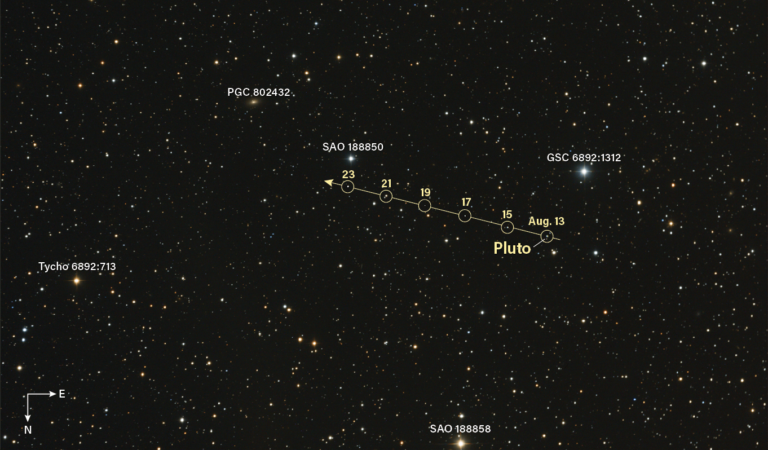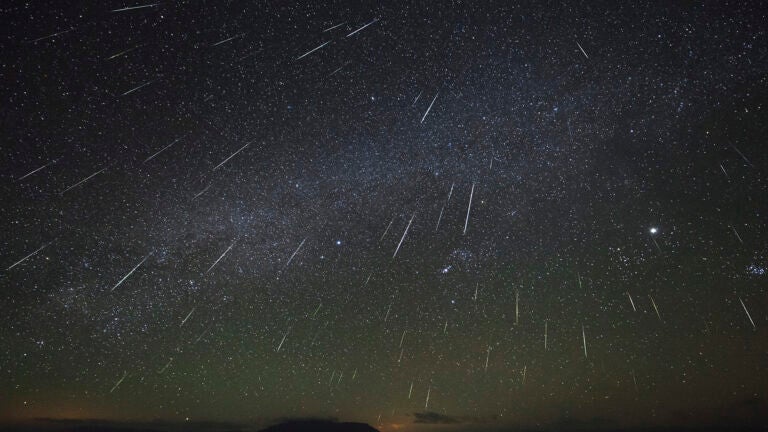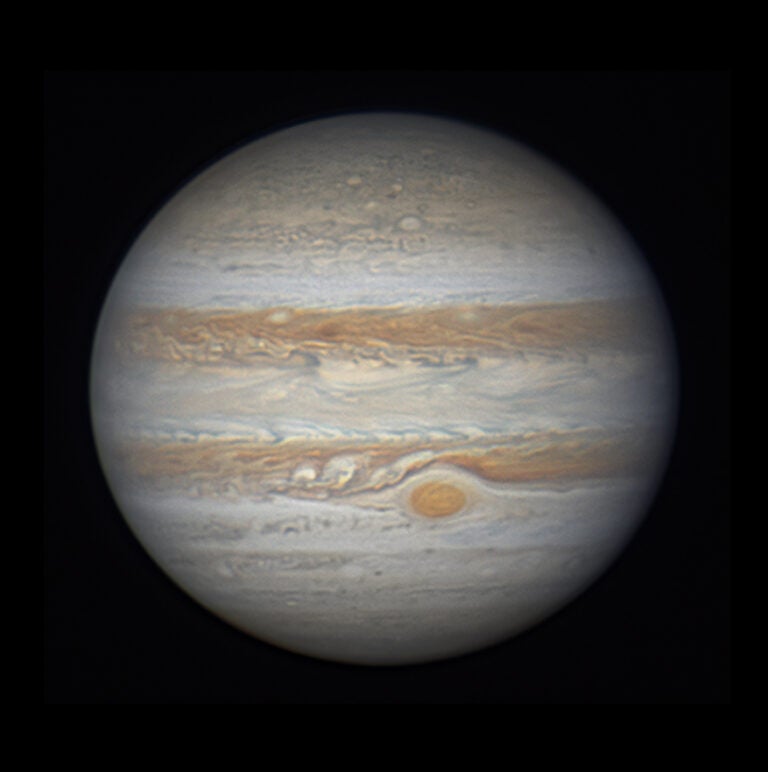You know summer is just around the corner when the Pleiades star cluster sinks low in the west after sunset. May’s warmer weather also sees Mars dipping into evening twilight, a prelude to the Sun’s light swallowing it in June.
But don’t fret: Plenty of planets occupy prime positions this month. Jupiter appears in the southeast in early evening and remains on view nearly all night. Saturn, which rises in late evening, climbs highest in the south before dawn. Early morning viewers also can enjoy Venus blazing in the east. Finally, binoculars should deliver fine views of Comet 41P/Tuttle-Giacobini-Kresak all night long.
Let’s start our monthly tour in the western sky soon after the Sun goes down. There you’ll find Mars glowing at magnitude 1.6 against the backdrop of Taurus. Don’t confuse it with nearby Aldebaran, the Bull’s brightest star, which has a similarly orange hue. Aldebaran shines about a half-magnitude brighter. The planet appears 7° (about one binocular field) to Aldebaran’s right May 1 and passes 6° due north of the star the evening of the 6th. Although Aldebaran becomes lost in twilight by mid-May, Mars’ eastward motion relative to the stars keeps it slightly ahead of the Sun all month.
In contrast to Mars’ fading glory, Jupiter dominates the evening sky. On May 1, the giant world stands 35° above the southeastern horizon an hour after sundown and doesn’t set until morning twilight starts to paint the sky. The planet shines brilliantly at magnitude –2.4 early in the month and dims by just 0.1 magnitude during May, keeping it the evening sky’s brightest point of light.
Jupiter spends the month among the background stars of Virgo the Maiden, some 10° northwest of 1st-magnitude Spica. Be sure to look for it May 7, when it hangs 2° to the right of a bright gibbous Moon.
When viewed through a telescope, Jupiter’s atmosphere resolves into wondrous detail. The gas giant’s disk, which spans 42″ at midmonth, sports an alternating series of bright zones and darker belts. The most conspicuous of these parallel bands are two equatorial belts, one on either side of a zone that coincides with the planet’s equator. The temperate belts and zones appear more subtle but often harbor noticeable spots.
Any telescope also reveals Jupiter’s four large moons. They typically appear in a straight line because all of them orbit in the planet’s equatorial plane. But this plane currently tilts enough from our point of view that the two outer moons, Ganymede and Callisto, can appear oddly out of line. Check out the scene the night of May 9/10, when Io, Ganymede, and Callisto appear in a straight line angled some 40° to Jupiter’s equator. The closest alignment occurs between roughly 1:00 and 1:30 a.m. EDT.
Yet there’s more to viewing Jupiter’s moons this night than one unusual configuration. All four perform an intricate dance with the planet and each other. A telescopic view in early evening reveals only three satellites because Jupiter’s shadow completely engulfs Ganymede. The solar system’s largest moon emerges from this eclipse at 10:55 p.m. EDT some 30″ southeast of the planet’s limb. Also note Europa slightly west of Jupiter. It passes behind the giant world’s limb at 11:45 p.m.
Following the odd lineup of Callisto, Ganymede, and Io, Callisto coasts north of Jupiter while Io sets its sights on the planet’s midsection. The latter moon crosses in front of the gas giant’s eastern limb at 2:47 a.m. Like Jupiter, Io also casts a shadow, and it touches the planet’s cloud tops starting at 3:30 a.m. Six minutes later, Europa exits Jupiter’s shadow some 20″ off the southeastern limb. The night’s final satellite events come when Io leaves Jupiter’s disk at 4:58 a.m. followed by its shadow at 5:41 a.m. Although the planet sets in the eastern half of North America before the conclusion plays out, those in the western half should enjoy excellent views.
Saturn rises shortly before 11:30 p.m. local daylight time at the beginning of May and some two hours earlier by month’s end. It climbs highest in the south during the wee hours of the morning and remains conspicuous until twilight is well underway.
The ringed planet will reach opposition and peak visibility in mid-June, but the view in May suffers little in comparison. You’ll be hard-pressed to notice the world growing brighter because its magnitude increases only from 0.3 to 0.1 during the month.
Once you soak in the view with your naked eye, target Saturn with binoculars. The ringed planet nestles among the rich star clouds of the Milky Way, not far from the galactic center. Saturn drifts slowly westward during May, starting in Sagittarius and crossing into Ophiuchus on May 18. You’ll see the misty glows of the Trifid Nebula (M20) and its neighbor, the open star cluster M21, some 5° east of the planet. The spectacular Lagoon Nebula (M8) lies less than 2° south of these splendid deep-sky objects. Also look for the fine open cluster M23 about 5° northeast of Saturn. Avoid the mornings of May 13 and 14 when a bright gibbous Moon passes a few degrees from Saturn.
Of course, nothing compares to the view of Saturn through a telescope. The planet’s disk, which measures 18″ across at midmonth, may show the subtle shading of an equatorial belt and some darkening toward the poles during moments of good seeing. But the rings are what put Saturn in a class by itself. They span 41″ and tip 26° to our line of sight, a large enough tilt to reveal fine ring structure. Notice in particular the dark Cassini Division that separates the outer A ring from the brighter B ring.
Small telescopes also reveal several of the planet’s moons. Perhaps the most intriguing of these observationally is distant Iapetus, which glows some five times brighter when it lies farthest west of the planet than when it is farthest east. It reaches a favorable greatest western elongation May 9, when it stands 9′ from Saturn. Iapetus then shines at 10th magnitude as its bright hemisphere faces Earth. It fades slowly as it heads eastward along its 79-day orbit. The moon glows at 11th magnitude when it passes 2′ north of the planet May 29.
The other visible moons lie much closer to Saturn. The brightest is 8th-magnitude Titan, whose distance from the planet ranges between 1.3′ and 3.1′ during its 16-day orbit. Look for Titan due north of Saturn May 7 and 23 and due south on May 15 and 31.
A trio of 10th-magnitude moons orbit inside of Titan. Rhea circles Saturn in 4.5 days, while it takes Dione 2.7 days and Tethys only 1.9 days. Enceladus hugs the planet’s rings, taking just 1.4 days to complete a circuit. This moon glows at 12th magnitude and hovers so close to the rings that the glare makes it hard to see.
The two most distant major planets in the solar system, Uranus and Neptune, join with the two closest, Mercury and Venus, in May’s morning sky.
The first to rise is outermost Neptune. This ice giant world resides in Aquarius and pokes above the eastern horizon around 3 a.m. local daylight time in mid-May. To locate Neptune, first find magnitude 3.8 Lambda (λ) Aquarii and then scan 2.2° east-northeast to the 6th-magnitude star 81 Aqr. The planet spends the month within 20′ of this star and passes 9′ due south of it on the 14th. You’ll need binoculars to spy magnitude 7.9 Neptune and a telescope to see its 2.3″-diameter disk.
Dazzling Venus rises about two hours before the Sun. Once it does, it dominates the eastern sky. The inner planet reached greatest brilliancy in late April, but it remains the same brightness (magnitude –4.7) in early May and dims only 0.2 magnitude by month’s end. Be sure to catch the waning crescent Moon when it slides 2° south of the planet May 22.
Venus now lies relatively close to Earth, and this means that its appearance through a telescope changes dramatically during the course of the month. On May 1, the planet appears 38″ across and about one-quarter illuminated. By the 31st, its disk spans 25″ and nearly half of it is lit.
Venus also serves as a guide to distant Uranus. Wait until the end of May, when the two rise together just as morning twilight begins. On the 31st, magnitude 5.9 Uranus lies 3° to the left of its much brighter neighbor. Binoculars will frame the pair nicely, though you’ll need a telescope to see Uranus’ 3.4″-diameter disk. Although the outer planet soon gets lost in the growing twilight, Venus remains conspicuous until shortly before sunrise.
Start looking for Mercury around the time of its May 17 greatest elongation. The innermost world then lies 26° west of the Sun and climbs 4° high in the east a half-hour before sunup. The planet shines at magnitude 0.5 and will be tough to find with the naked eye. Mercury becomes easier to find late in the month, as it brightens to magnitude –0.3 while maintaining its predawn altitude.
| WHEN TO VIEW THE PLANETS | ||
| Evening sky | Midnight | Morning sky |
| Mars (northwest) | Jupiter (southwest) | Mercury (east) |
| Jupiter (southeast) | Saturn (southeast) | Venus (east) |
| Saturn (southwest) | ||
| Uranus (east) | ||
| Neptune (southeast) | ||
Pickin’ up good librations
Have you ever watched someone roll their head? Although you still can’t see the back of their head, you’ll notice more than just the front half. The Moon performs a similar maneuver, called “libration,” over a 27-day period. It lets us see 9 percent more of Luna than the 50 percent that normally faces Earth.
Binoculars allow you to track this motion easily. And the timing this month is just about perfect. In most lunar months, at least one of the lunar edges angled toward us ends up in darkness. In May, the Sun illuminates each section of the limb as our worlds dance through space.
The month opens with the northeastern limb displaying the lava-filled Mare Humboldtianum. Inward from there lies the lovely oval crater Endymion, with the striking pair of Atlas and Hercules not much farther inside. To the south, the dark patches of Mare Smythii and Mare Marginis sit near the limb while Mare Crisium resides a fair distance away. The lunar highlands much farther south are their usual white, but that won’t last long.
As we approach the May 10 Full Moon, notice how our satellite seems to roll back to the northeast. Endymion almost reaches the limb, and Atlas and Hercules are not far behind. The southern highlands show a gray shade as Mare Australe rotates into view. Note how far north Tycho lies — six months from now, the crater will appear much closer to the southern limb. Also check out the western limb, where Grimaldi sits a bit more than one crater-width from the edge. Meanwhile, Oceanus Procellarum extends right to the limb.
And keep watching after Full Moon — binoculars let you follow libration even past sunrise. Grimaldi now rolls away from the limb, and each passing day reveals more of Procellarum’s white coastline in the northwest.
A brief window of opportunity
May’s annual gift to meteor watchers is the Eta Aquariid shower. The shower peaks the night of May 5/6, but it typically produces at least half its maximum rate (50 meteors per hour) from May 3 to 10. Although the waxing gibbous Moon interferes this year, observers have a clear shot once the Moon sets — around 4 a.m. local daylight time on the 6th and an hour earlier each day before then.
The meteors appear to radiate from the constellation Aquarius, which rises a couple of hours before twilight begins. The meteoroids hit our atmosphere at 41 miles per second, one of the highest velocities among all showers. The high speed and low radiant mean Eta Aquariid meteors often leave long trails.
Comet viewing the whole night through
Comet 41P/Tuttle-Giacobini-Kresak is perfectly placed for Northern Hemisphere observers this month. The periodic visitor remains visible from dusk to dawn as it slides southward through eastern Hercules. The comet appears in the vicinity of brilliant Vega, which makes a convenient signpost for finding the dirty snowball. Astronomers expect 41P could reach 6th magnitude in early May, and it should be a fine target through binoculars and telescopes if you’re far from city lights.
The comet’s brightest part should be the slightly oval, yellow-white ball of gas and dust known as the coma, or head. Look for a greenish gas tail extending from the coma. If the comet performs like it did at its last observed apparition, this tail should resolve into multiple strands when viewed through a telescope. The comet’s dust tail curves westward from the head.
Comet 41P should be a finalist for comet of the year, but if its nucleus cracks as it did in 2001, it may rank as the comet of the decade. That previous outburst caused 41P to brighten by a factor of 100.
Spring 2017 is shaping up as a golden age for binocular comets. Another 6th-magnitude gem — Johnson (C/2015 V2) — treks south through eastern Boötes this month and also remains on view all night. This first-time visitor to the inner solar system should deliver a nice show for both visual observers and astroimagers as its tail transforms from a wedge shape into a knife-edged saber in a few weeks.
If two bright comets don’t satisfy you, maybe a third will. The 7th-magnitude Comet PANSTARRS (C/2015 ER61) lies low in the east before dawn, just a few degrees from Venus.
Be sure to enjoy this comet bounty while it lasts. By the time autumn rolls around, we’ll be back to our standard fare of less-than-spectacular 10th-magnitude faint fuzzies.
Locating Asteroids
Whether you prefer an easy search with a telescope from the suburbs or a more challenging hunt with binoculars under a dark sky, asteroid 4 Vesta is the target of choice this month. Start your quest with the great Beehive star cluster (M44) in Cancer. Then slide north to magnitude 4.7 Gamma (γ) Cancri, the brightest star close to the asteroid in May.
Vesta reflects nearly 40 percent of the sunlight that strikes it, making it one of the shiniest asteroids in solar system and, not surprisingly, one of the brightest. Although now fading from its peak, Vesta still registers a respectable 8th magnitude. And because it is moving away from the crowded Milky Way, there are fewer background stars to complicate the hunt.
During May’s first week, Vesta plies the empty space between the 6th-magnitude stars Psi (ψ) and Lambda (λ) Cnc. To find it then, sketch four or five stars in your field of view and then return a night or two later to pick out the one that moved. In mid-May, Vesta glides just south of a zigzag line of stars anchored by magnitude 5.7 Upsilon1 (υ1) Cnc. Vesta outshines everything in its vicinity during the month’s final week, so identifying it then should be a snap.

